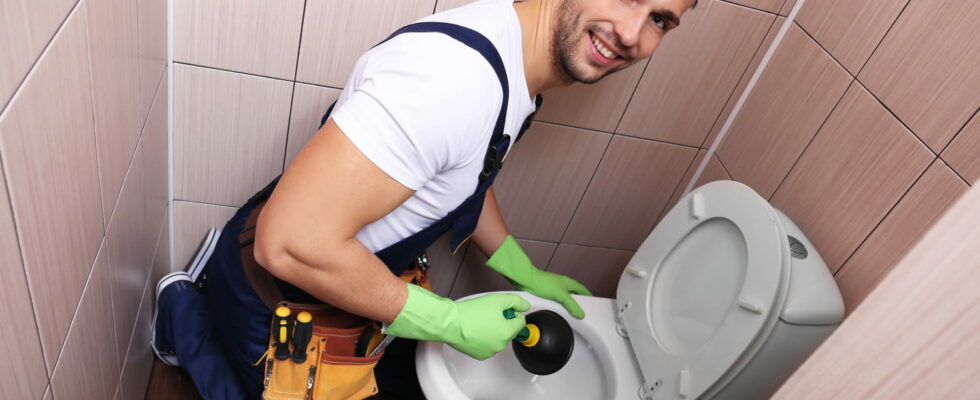Everyone experiences clogged toilets at least once in their life. Fortunately, it is not always necessary to call a plumber to intervene: follow the advice of the pros to unclog them yourself.
Having a clogged toilet can quickly become a nightmare. When the toilet water comes up after flushing, it often means there is a blockage in the pipes. The most common cause is toilet paper buildup, but other non-dissolvable items like wipes or tampons can also cause clogs. Even limescale deposits can reduce the diameter of pipes and prevent water from flowing properly!
One of the simplest and most effective methods for unclogging a toilet is to use a combination of baking soda and white vinegar. These two products, when mixed, react together to create a foam that helps dissolve blockages. Simply pour baking soda into the bowl, then add white vinegar. Leave the mixture on for about 30 minutes before rinsing with warm water. This ecological and economical method also helps neutralize bad odors.
White vinegar can also be used on its own to dissolve toilet paper clogs. Mix a liter of water with half a liter of white vinegar, heat everything, then pour this solution into the bowl. Wait about twenty minutes, then flush the toilet. This technique is particularly effective for toilet paper clogs
Dishwashing liquid is another practical solution for unblocking toilets. Pour a few drops of dishwashing liquid into the bowl and let it sit for a few minutes. Next, pour a bucket of hot water all at once to create pressure that will help clear the clog. Wait a few minutes and flush the toilet to see the result. Sometimes boiling water can be enough to unclog a slightly clogged toilet. Simply pour a container of boiling water into the bowl and wait for the water to drain normally.
Plumbers also use tools such as a plunger or plumber’s ferret to unclog pipes. The suction cup works by moving back and forth in standing water, which helps move the clog. The ferret, on the other hand, is a long flexible metal wire equipped with a drill bit at its end. By inserting it into the bowl and applying pressure and rotating movements, it is possible to destroy the blockage and allow the water to flow again. And, in some cases, they use a Karcher type high pressure cleaner to get rid of the most stubborn blockages.
Finally, to prevent blockages, avoid throwing non-dissolvable objects down the toilet, such as wipes, tampons or paper towels. Reduce the amount of toilet paper used and remember to flush the toilet twice if necessary. Regularly cleaning pipes with coffee grounds can also help prevent blockages and neutralize bad odors.
